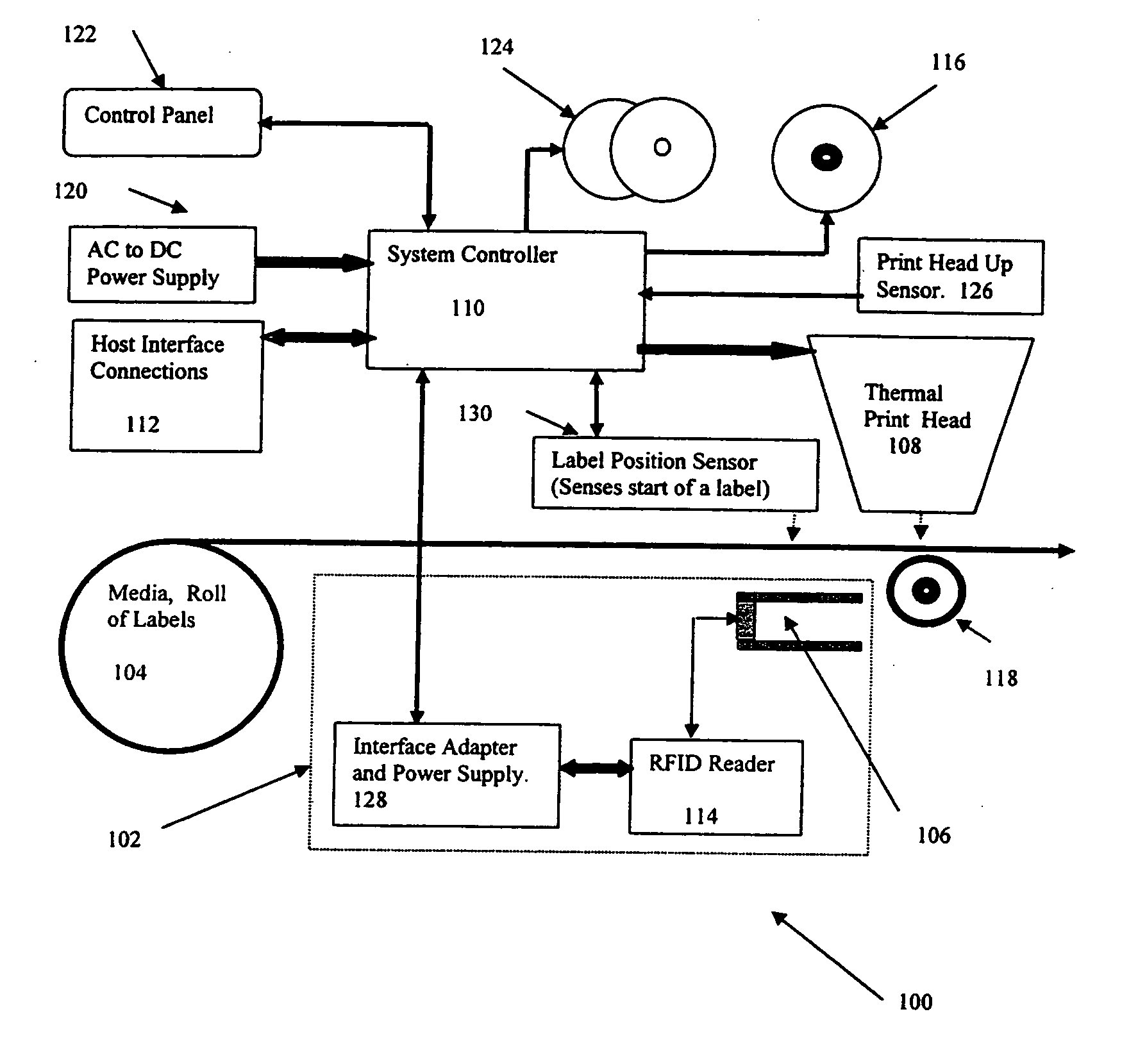RFID characterization method
a technology of characterization method and rfid tag, which is applied in the direction of signalling system, alarm, instruments, etc., can solve the problems of limited ability to program and read rfid tags used in thermal printer labels, and become more difficult to interrogate tags quickly and efficiently
- Summary
- Abstract
- Description
- Claims
- Application Information
AI Technical Summary
Benefits of technology
Problems solved by technology
Method used
Image
Examples
Embodiment Construction
[0016]FIG. 1 shows a block diagram of a printer system 100 with a radio frequency identification (RFID) reader subsystem 102 that can be used to implement one method of the present invention. Printer system 100 also includes a roll 104 of labels or media, where an RFID tag is embedded in each label. In other embodiments, the roll of labels can be replaced by a short strip of RFID labels, sufficient to perform a profile / RF characterization, as will be discussed below. RFID tags are conventional passive tags available from a multitude of manufactures. One such manufacturer is Alien Technology Corporation of Morgan Hill, Calif. Labels from roll 104 are fed over an RFID antenna 106, programmed, and printed by a thermal print head 108. A host computer 112 coupled to a system controller 110 that is in turn coupled to RFID reader subsystem 102, which includes antenna 106, allows the RFID tag on each label to be written to, read, and verified. The resulting label then has both a printed med...
PUM
 Login to View More
Login to View More Abstract
Description
Claims
Application Information
 Login to View More
Login to View More - R&D
- Intellectual Property
- Life Sciences
- Materials
- Tech Scout
- Unparalleled Data Quality
- Higher Quality Content
- 60% Fewer Hallucinations
Browse by: Latest US Patents, China's latest patents, Technical Efficacy Thesaurus, Application Domain, Technology Topic, Popular Technical Reports.
© 2025 PatSnap. All rights reserved.Legal|Privacy policy|Modern Slavery Act Transparency Statement|Sitemap|About US| Contact US: help@patsnap.com



